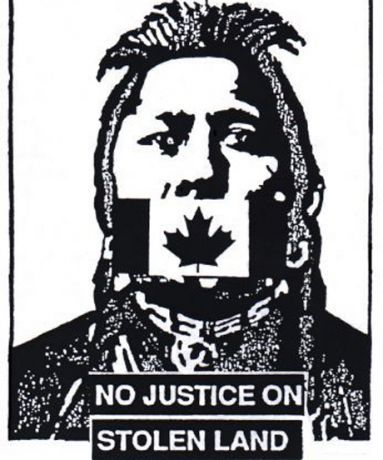Features
You are here
The treaty process and Canada’s ongoing forced assimilation

October 17, 2013
As a former student of the Indian Residential School (IRS) system, my statement to the Truth and Reconciliation Commission of Canada is that, from 1867 to the present time, Canada has held to the racist policy of forcibly assimilating the Indian people. This policy was implemented, for 100 years as the IRS system and, for the last 40 years as the comprehensive treaty process.
The Trudeau government considered that, by 1969, the IRS system had accomplished its purpose (“to kill the Indian in the child”). At that time the partnership between the federal government and the churches, in the operation of the residential schools, began its dissolution. In 1969, also, the federal government tried unsuccessfully, with the proposed White Paper Policy on Indians, to unilaterally extinguish Indians as a distinct people.
In 1971, the federal government initiated the Core Funding Program. The Core Funding Program made funds available, and was the means by which the federal government created, a compliant native leadership. What the federal government wanted the native representatives to do became apparent in 1973 with the Comprehensive Land Claims Settlement Policy (CLCSP).
The treaty process
The CLCSP existed to strictly circumscribe a comprehensive treaty process that would, by non-negotiable requirements, accomplish the objectives of the withdrawn WPP of 1969. This would be done bilaterally, over time, and by increments—ie, one native community, or one group of native representatives, at a time.
The comprehensive treaty process is coercive. Treaty payments are, in reality, long overdue resources that are withheld from severely underprivileged native communities. In the comprehensive treaties, two non-negotiable requirements are the removal of native communities from the jurisdiction of the Indian Act and their incorporation into Canadian, municipal or territorial jurisdictions. The federal government denies that there are non-negotiable requirement in the comprehensive treaty process. Lawyers on the native side, however, say otherwise. The unwavering data of post-treaty results and statements of independent native leaders also clearly indicate the existence of non-negotiable requirements.
Central to a determination of the validity of comprehensive treaties is the definition of a nation. Treaties are made between nations. So-called First Nations refer to actually existing tribal nations at the time of contact. On the level of nations, the treaties of that period, ratified by the British Royal Proclamation of 1763, were bona fide treaties. They were entered into because the British were vastly outnumbered and treaties of alliances with tribes were necessary to defeat other tribes, the French (1760), the Americans (1812), and to facilitate British settlement.
Genocide, in the colonial narrative, was then responsible for depopulating the tribal nations beyond sustainability. In that period, the tribes ceased to exist, economically and politically, as independent national entities. In 1867, the settlers took control of the remaining British colonies in North America. The Canadian imperialist settler-state came into being. The survivors of the destroyed tribal nations were unified as Canadian Indians into a native internal colony administered by the Department of Indian Affairs under the legislative authority of the Indian Act. The native internal colony is the actually existing national entity: an oppressed Indian nation within the Canadian settler-state.
The ideology, in the terms of which the comprehensive treaties of today are rationalized, raises the conditions of the British colonial period from the dead. Native communities are given false national recognition by the federal government. Comprehensive treaties are made that compel the members of native communities to renounce their nationalities as Canadian Indians, secede from the native internal colony, and accept annexation into Canadian, municipal or territorial jurisdictions.
Today, natives on almost one-half of Canada’s land area have been subject to comprehensive treaties. As such, they have been deprived of their post-Confederation identity and denied their pre-contact heritage. This legislative extinguishment of Indian identity and Indian rights is the “certainty” that the federal government has been securing for investors since 1973. Comprehensive treaties have been signed in the south, but primarily in the north, eg Nunavut. The Inuit, like the Métis, form a distinct part of the native internal colony that is, by population, mainly Indian.
Self-determination against imperialism
On the strategic level, the native internal colony will achieve self-determination up to and including some form of sovereignty. At that time the Indian Act will be meaningless. In the meantime, however, ie on the level of tactics, the Indian Act must be defended. This, because the federal government is now undertaking to deprive native people of their nationality and place them in an even weaker position that that existing in the colonial relationship. The defense of the Indian Act can be viewed as a necessary tactical retreat from the historic enemy initiative that the comprehensive treaty process is.
The Canadian government represents an elite of settlers who are also imperialists. The imperialist character of the Canadian settler-state is the political domain of oppressed peoples in the Third World. Self-determination for the native internal colony will be made practicable, fortuitously, by anti-imperialist struggles against Canadian state power and Canadian exploitation. The Canadian government makes war on people in poor countries. In this country, the Canadian government seeks to achieve its objectives peacefully, it by forcing treaties that totally subvert the Indian people.
Section:










